In 1980, Briton Mike Wells surprised us with the union of a little black hand -- tiny and contracted -- with the palm of a white hand lent by a missionary.
Twelve years later, hunger is once again the theme of a photograph which was awarded by the WPP. James Nachtwey, another North American, captured the image of a woman from
In 2005, Canadian Finbarr O’Reilly brought hunger back to newspaper headlines with a photograph of a Nigerian mother and her son in an emergency relief center.
The chronicles and images of hunger also found their place among the Pulitzer Prizes. In 1975, the previously mentioned Ovie Carter and reporter William Mullen won the main prize for their coverage of hunger in Africa and
In 1985, three American journalists from Newsday magazine won the contest with a series of articles on hunger in the African continent.
In 1994, South African Kevin Carter made an impact with the image of the agony of a little girl in
The girl died; the photographer did not hear from her from the instant he took the picture and, months after receiving the Pulitzer, maybe with a tormented conscience, took his own life in a parking lot in
The Kevin Carter case brought about -- for a brief period -- a discussion over the ethics of those photographers and journalists who experience the extreme situation of standing before a human being who needs their help.
One day, we -- the journalists -- will have to hold a deep discussion on this matter, regardless of the interests of the media owners.
If we do not redefine the very design of the informative agenda, from an ethics of solidarity and commitment towards the people who are suffering, any “WPP” or “Pulitzer” -- no matter how luminous it may seem -- will be just another brick in the wall.
In 1959, with his book Geopolitics of Hunger, Brazilian doctor and anthropologist Josue de Castro broke the circle of silence set -- on a sociological and political level -- around the hunger problem.
Castro noted the curious “bibliographic indigence” on hunger, contrasting it with the vast production of books about war and epidemics, scourges that -- to a great extent -- were a direct result of hunger.
“Which are the hidden factors of this conspiracy of silence against hunger?” he asked himself in the foreword of the first edition of his second book, Geography of Hunger. “This is a premeditated silence,” he answered. “It is the interests and preconceptions -- of a moral, political and economic order -- of our Western civilization which turns hunger into a forbidden matter, or at least, one that is not advisable to deal with before an audience.”
In another passage, he paid tribute to Freud for having had the courage to point out the omission of sex in the reigning culture and thought. “We crash” -- Josue de Castro wrote -– “into one of the imperatives of the collective soul of our civilization, which has made sex and hunger taboo, impure and lurid topics.”
Nevertheless, the anthropologist acknowledged that poets and narrators -- although not from a scientific perspective -- had taken hunger as the generating nucleus of the external and internal conflicts of men.
Finally, in that foreword that should be re-edited and re-read, he quoted Richard Temple, the British colonial administrator in India: “While so many unfortunate died of starvation” -- the Englishman said without turning a hair – “Calcutta’s port kept exporting considerable amounts of cereals abroad. The hungry were too poor to afford the wheat that would have saved their lives.”
“It is logical” -- Castro added -- “that those who greatly benefited from their imports from India would do everything in their power to suffocate, in Europe, the faint rumors about those distant hungers, because if they had been considered the way they deserved, they would have harmed their lucrative trade.”
Between
In the mid 1970s, thanks to Josue Castro’s work, hunger had begun to be the crux of the Food and Agriculture Organization’s worldwide work -- an organization created in 1945, almost simultaneously with the United Nations.
“The world is hungry” was the headline of Leo Plan magazine on July 15, 1964. In the article, the Malthusian ghost of the narrowing of the arable surface and the explosive demographic growth that would lead to a world crisis by the year 2000 was stirred once again.
Ten years later, in 1974 -- declared World Population Year by the UN -- the UNESCO Courier asked: “Man or hunger?”
“An ecological catastrophe lies in wait for us,” specialists John P. Holdren and Paul R. Ehrlich wrote in that issue. “If the demographic growth carries on this way, nobody and nothing will be able to stop it.”
Nevertheless,
A teacher from
The truth is that hunger -- even though it had been set in the center of the scene by the indispensable Josue de Castro and become a constant policy of the United Nations, we must add -- did not cease to be a scourge for three-fourths of humanity, not even after the appearance of a great technological step forward in the production of fertilizers and genetically modified seeds.
In Josue de Castro’s books,
Nevertheless, it was noted that in those works there was a notable difference between the available statistic register and the reality of the family economies, producing and consuming food in loco (in the place).
And the reports or alerts from certain Argentine leaders from the beginning of the past century did not go unnoticed for Josue de Castro. “Ten years ago” -- he wrote -- “Argentine Senator Alfredo Palacios denounced (the fact) that 30,000 children in the Province of Buenos Aires were incapable of attending school due to their state of malnourishment.”
In April 1994, the Argentine magazine Nueva set fire on the issue of hunger once again, but within the usual framework: world hunger, projections for Asia and
Notwithstanding, consulting alternative sources such as the studies of anthropologist Patricia Aguirre, that issue revealed an important fact that relates hunger to inequity. “An Argentine family in a situation of extreme poverty” -- Aguirre wrote -- “spends 78% of their income on food, while the well-off spend 20%.”
The masking of that “Argentine hunger” which three consecutive decades of economic destruction had caused lasted until the explosive crisis of December 2001.
Then it was known (and the media could not help but hearing about it) that big masses of the Argentine population lacked the indispensable food for their own subsistence.
A few months later, the photo of Barbarita Flores -- the little girl from the Province of Tucuman that had to be hospitalized after having fainted twice as a result of hunger -- traveled around the world, bounced on the Moon and from there landed on a few Argentine consciences, to tell us that here, in the country of cattle and grain, around the corner, one kid or two or ten thousand were starving to death.
At the same time, in a totally schizophrenic game, some associations of producers of “direct seeding” (a euphemism for “transgenic”) paid for expensive media campaigns explaining that direct seeding represented “food for the world”.
“Food for the world?” -- we mumbled when we heard that phrase -- “Why don’t we start here at home?”
Elementary answer: because food is not for the world, but for those -- Sir Richard Temple would say -- who can buy it. And they do not start at home because neither Barbarita nor her parents or her brothers or her friends have the money to buy it.
It is stupid capitalism.
There is plenty of corn, but do not expect the price of corn flour to go down.
A lot of cows entered Liniers Market, but do not expect meat to be cheap.
In
The Spanish language original version of this article can be viewed at the web site www.pelotadetrapo.org.ar.
(July 15
PA/HG
END
MNA

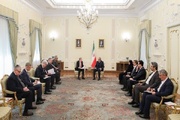


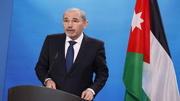
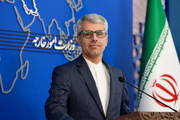




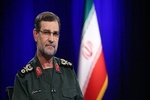










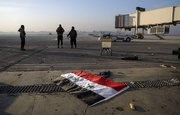
Your Comment